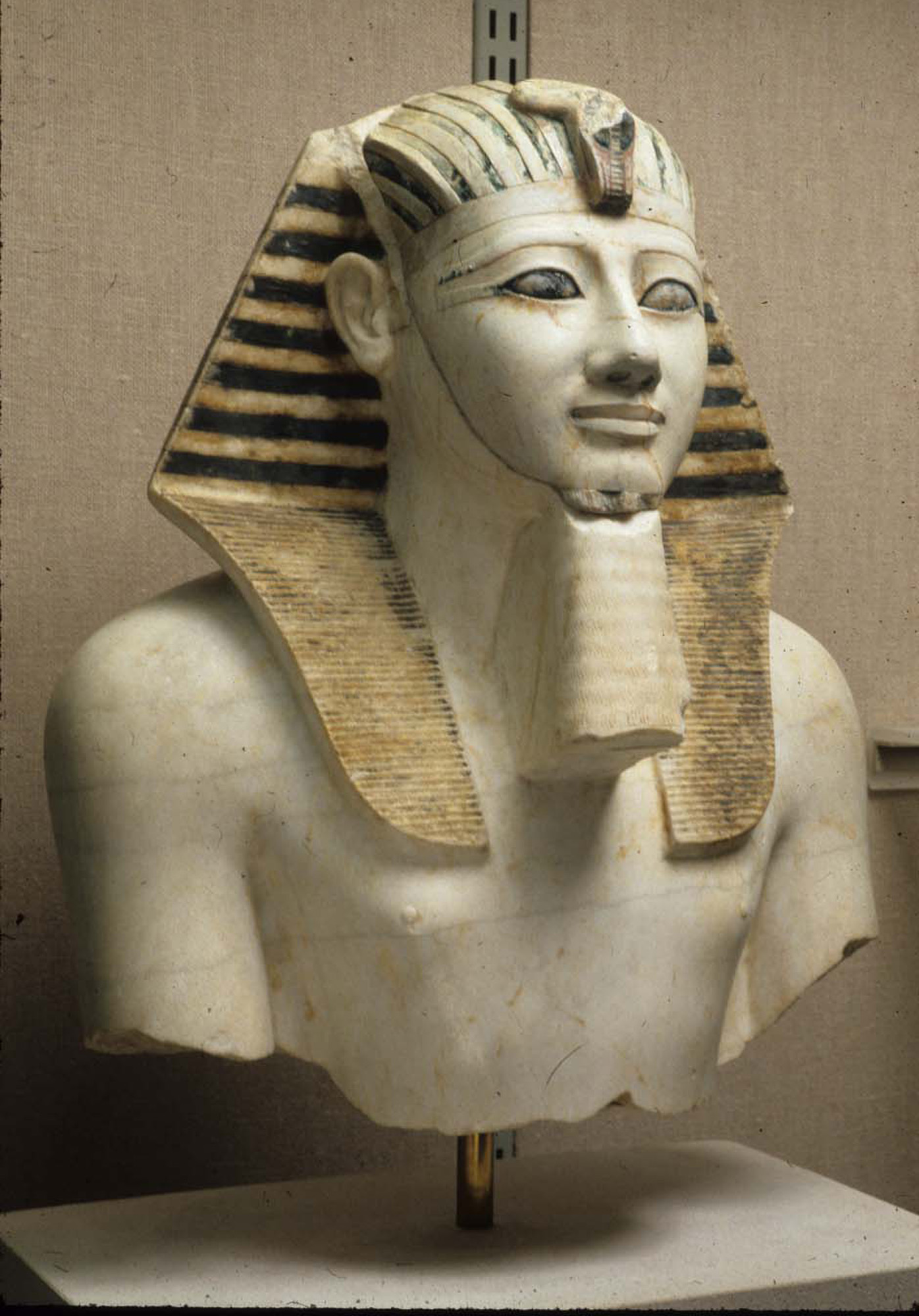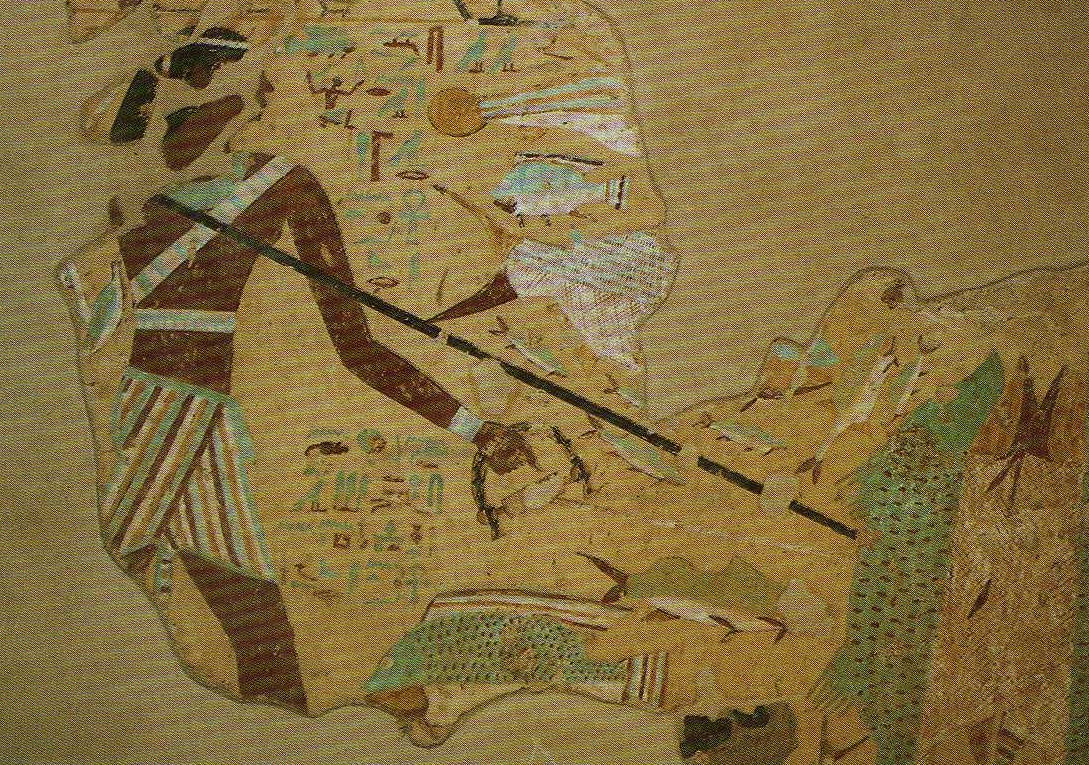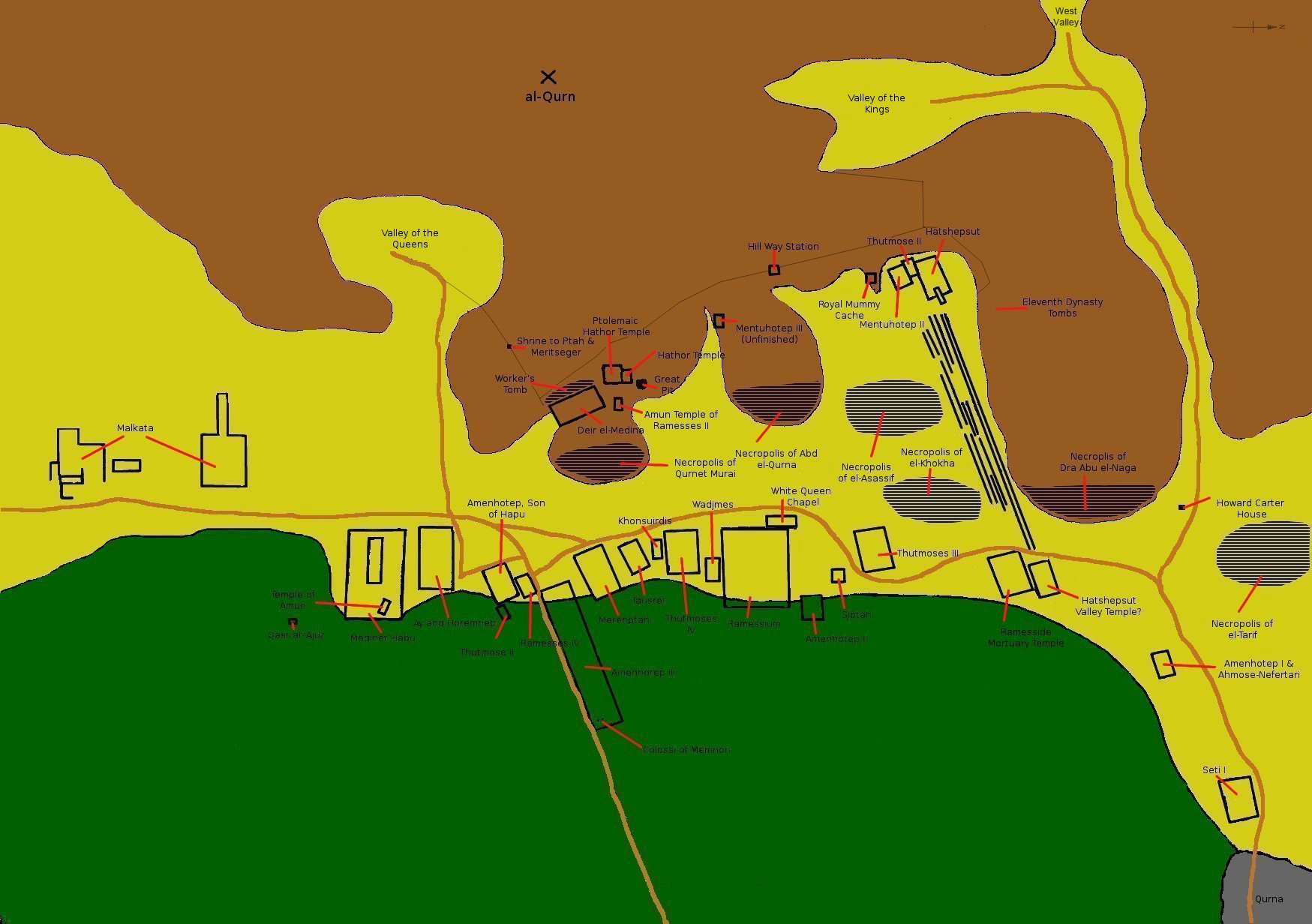|
Intef The Elder
Intef, whose name is commonly accompanied by epithets such as the Elder, the Great (= ''Intef-aa'') or born of Iku, was a Theban nomarch during the First Intermediate Period c. 2150 BC and later considered a founding figure of the 11th Dynasty, which eventually reunified Egypt.Darrell D. Baker: ''The Encyclopedia of the Pharaohs: Volume I - Predynastic to the Twentieth Dynasty 3300–1069 BC'', Stacey International, , 2008, p. 141-142 Rule Intef the Elder was not a pharaoh but rather the nomarch of Thebes c. 2150 BC. As such he would have nominally served either a king of the 8th Dynasty or one of the Herakleopolitan kings of 9th or 10th Dynasty. Intef the Elder would have controlled the territory from Thebes to Aswan to the south and not farther north than Coptos, which was then controlled by another dynasty of nomarchs. Intef is believed to be the father of his successor on the Theban throne, Mentuhotep I. Attestations Intef the Elder was seemingly perceived as a founding fi ... [...More Info...] [...Related Items...] OR: [Wikipedia] [Google] [Baidu] |
Flinders Petrie
Sir William Matthew Flinders Petrie ( – ), commonly known as simply Flinders Petrie, was a British Egyptologist and a pioneer of systematic methodology in archaeology and the preservation of artefacts. He held the first chair of Egyptology in the United Kingdom, and excavated many of the most important archaeological sites in Egypt in conjunction with his wife, Hilda Urlin. Some consider his most famous discovery to be that of the Merneptah Stele, an opinion with which Petrie himself concurred. Undoubtedly at least as important is his 1905 discovery and correct identification of the character of the Proto-Sinaitic script, the ancestor of almost all alphabetic scripts. Petrie developed the system of dating layers based on pottery and ceramic findings. He remains controversial for his pro-eugenics views; he was a dedicated believer in the superiority of the Northern peoples over the Latinate and Southern peoples. Early life Petrie was born on 3 June 1853 in Charlto ... [...More Info...] [...Related Items...] OR: [Wikipedia] [Google] [Baidu] |
Thutmose III
Thutmose III (variously also spelt Tuthmosis or Thothmes), sometimes called Thutmose the Great, was the sixth pharaoh of the Eighteenth Dynasty. Officially, Thutmose III ruled Egypt for almost 54 years and his reign is usually dated from 28 April 1479 BC to 11 March 1425 BC, from the age of two and until his death at age fifty-six; however, during the first 22 years of his reign, he was coregent with his stepmother and aunt, Hatshepsut, who was named the pharaoh. While he was shown first on surviving monuments, both were assigned the usual royal names and insignia and neither is given any obvious seniority over the other. Thutmose served as the head of Hatshepsut's armies. During the final two years of his reign, he appointed his son and successor, Amenhotep II, as his junior co-regent. His firstborn son and heir to the throne, Amenemhat, predeceased Thutmose III. He would become one of the most powerful pharaohs of the 18th dynasty. Becoming the sole ruling pharaoh of the ... [...More Info...] [...Related Items...] OR: [Wikipedia] [Google] [Baidu] |
Ankhtifi
Ankhtifi (or Ankhtify) was a nomarch of Hierakonpolis and a supporter of the pharaoh in Herakleopolis Magna ( 10th Dynasty), which was locked in a conflict with the Theban based 11th Dynasty kingdom for control of Egypt. Hence, Ankhtifi was possibly a rival to the Theban rulers Mentuhotep I and Intef I. He lived during the First Intermediate Period, after the Egyptian Old Kingdom state had collapsed, and at a time when economic hardship, political instability, and foreign invasion challenged the fabric of Egyptian society. Biography The precise pharaoh under whom Ankhtifi served is anything but certain; the sequence and number of kings in the 9th and 10th dynasties is a matter of widely varying conjecture. Only a few of the many names on the much later king-lists have had their reigns or existence corroborated through scattered archaeological finds. The only pharaoh mentioned in Ankhtifi's tomb is in the following isolated inscription: "Horus brings/brought (or may Horus bring) a ... [...More Info...] [...Related Items...] OR: [Wikipedia] [Google] [Baidu] |
Upper Egypt
Upper Egypt ( ar, صعيد مصر ', shortened to , , locally: ; ) is the southern portion of Egypt and is composed of the lands on both sides of the Nile that extend wikt:downriver, upriver from Lower Egypt in the north to Nubia in the south. In ancient Egypt, Upper Egypt was known as ''tꜣ šmꜣw'', literally "the Land of Reeds" or "the Cyperaceae, Sedgeland". It is believed to have been united by the rulers of the supposed Thinite Confederacy who absorbed their rival city states during the Naqada III period (c. 3200–3000 BC), and its subsequent unification with Lower Egypt ushered in the Early Dynastic Period (Egypt), Early Dynastic period. Upper and Lower Egypt became intertwined in the symbolism of Pharaoh, pharaonic sovereignty such as the Pschent double crown. Upper Egypt remained as a historical region even after the classical period. Geography Upper Egypt is between the Cataracts of the Nile beyond modern-day Aswan, downriver (northward) to the area of El-Ayait, ... [...More Info...] [...Related Items...] OR: [Wikipedia] [Google] [Baidu] |
National Archaeological Museum (Florence)
The National Archaeological Museum of Florence (Italian – Museo archeologico nazionale di Firenze) is an archaeological museum in Florence, Italy. It is located at 1 piazza Santissima Annunziata, in the Palazzo della Crocetta (a palace built in 1620 for princess Maria Maddalena de' Medici, daughter of Ferdinand I de Medici, by Giulio Parigi). History The museum was inaugurated in the presence of king Victor Emmanuel II in 1870 in the buildings of the ''Cenacolo di Fuligno'' on via Faenza. At that time it only comprised Etruscan and Roman remains. As the collections grew, a new site soon became necessary and in 1880 the museum was transferred to its present building. The collection's first foundations were the family collections of the Medici and Lorraine, with several transfers from the Uffizi up to 1890 (except the collections of marble sculpture which the Uffizi already possessed). The Egyptian section was first formed in the first half of the 18th century from part of the ... [...More Info...] [...Related Items...] OR: [Wikipedia] [Google] [Baidu] |
Strasbourg
Strasbourg (, , ; german: Straßburg ; gsw, label=Bas Rhin Bas-Rhin (; Alsatian: ''Unterelsàss'', ' or '; traditional german: links=no, Niederrhein; en, Lower Rhine) is a department in Alsace which is a part of the Grand Est super-region of France. The name means 'Lower Rhine', referring to its lowe ... Alsatian dialect, Alsatian, Strossburi , gsw, label=Haut Rhin Alsatian dialect, Alsatian, Strossburig ) is the Prefectures in France, prefecture and largest city of the Grand Est Regions of France, region of Geography of France, eastern France and the Seat of the European Parliament in Strasbourg, official seat of the European Parliament. Located at the France–Germany border, border with Germany in the historic region of Alsace, it is the prefecture of the Bas-Rhin Departments of France, department. In 2019, the city proper had 287,228 inhabitants and both the Eurométropole de Strasbourg (Greater Strasbourg) and the Arrondissement of Strasbourg had 505,272 inhabita ... [...More Info...] [...Related Items...] OR: [Wikipedia] [Google] [Baidu] |
Theban Necropolis
The Theban Necropolis is a necropolis on the west bank of the Nile, opposite Thebes ( Luxor) in Upper Egypt. It was used for ritual burials for much of the Pharaonic period, especially during the New Kingdom. Mortuary temples * Deir el-Bahri ** Mortuary temple of Hatshepsut ** Mortuary temple of Mentuhotep II ** Mortuary temple of Thutmose III * Medinet Habu ** Mortuary temple and palace of Ramesses III ** Mortuary Temple of Ay & Horemheb * Mortuary Temple of Amenhotep III ** Colossi of Memnon * Mortuary Temple of Merneptah * Mortuary Temple of Ramesses IV * Mortuary Temple of Thutmose IV * Mortuary Temple of Thutmose III * Mortuary Temple of Twosret * Temple of Nebwenenef * Qurna ** Mortuary Temple of Seti I * Mortuary Temple of Amenhotep II * Ramesseum (Mortuary Temple of Ramesses II) Royal Necropolis * Valley of the Kings (Modern: "''Wadi el-Muluk''") * Valley of the Queens (Modern: "''Biban el-Harim''") * Royal Cache * Bab el-Gasus Necropolis * Deir el-Med ... [...More Info...] [...Related Items...] OR: [Wikipedia] [Google] [Baidu] |
Dendera
Dendera ( ar, دَنْدَرة ''Dandarah''; grc, Τεντυρις or Τεντυρα; Bohairic cop, ⲛⲓⲧⲉⲛⲧⲱⲣⲓ, translit=Nitentōri; Sahidic cop, ⲛⲓⲧⲛⲧⲱⲣⲉ, translit=Nitntōre), also spelled ''Denderah'', ancient Iunet 𓉺𓈖𓏏𓊖 “jwn.t”, Tentyris or Tentyra is a small town and former bishopric in Egypt situated on the west bank of the Nile, about south of Qena, on the opposite side of the river. It is located approximately north of Luxor and remains a Latin Catholic titular see. It contains the Dendera Temple complex, one of the best-preserved temple sites from ancient Upper Egypt. Etymology The original name of the town is , the etymology of which is unknown. It was later complemented by the name of the chief goddess Hathor and became Egyptian which is the source of cop, ⲛⲓⲧⲉⲛⲧⲱⲣⲓ, translit=Nitentōri or just "of the goddess", which is the source of grc-x-koine, Τεντυρις. The modern Arabic name of t ... [...More Info...] [...Related Items...] OR: [Wikipedia] [Google] [Baidu] |
Metropolitan Museum Of Art
The Metropolitan Museum of Art of New York City, colloquially "the Met", is the largest art museum in the Americas. Its permanent collection contains over two million works, divided among 17 curatorial departments. The main building at 1000 Fifth Avenue, along the Museum Mile on the eastern edge of Central Park on Manhattan's Upper East Side, is by area one of the world's largest art museums. The first portion of the approximately building was built in 1880. A much smaller second location, The Cloisters at Fort Tryon Park in Upper Manhattan, contains an extensive collection of art, architecture, and artifacts from medieval Europe. The Metropolitan Museum of Art was founded in 1870 with its mission to bring art and art education to the American people. The museum's permanent collection consists of works of art from classical antiquity and ancient Egypt, paintings, and sculptures from nearly all the European masters, and an extensive collection of America ... [...More Info...] [...Related Items...] OR: [Wikipedia] [Google] [Baidu] |
Mentuhotep II
Mentuhotep II ( egy, Mn- ṯw- ḥtp, meaning "Mentu is satisfied"), also known under his prenomen Nebhepetre ( egy, Nb- ḥpt- Rˁ, meaning "The Lord of the rudder is Ra"), was an ancient Egyptian pharaoh, the sixth ruler of the Eleventh Dynasty. He is credited with reuniting Egypt, thus ending the turbulent First Intermediate Period and becoming the first pharaoh of the Middle Kingdom. He reigned for 51 years, according to the Turin King List. Mentuhotep II succeeded his father Intef III on the throne and was in turn succeeded by his son Mentuhotep III. Mentuhotep II ascended Egypt’s throne in the Upper Egyptian city of Thebes during the First Intermediate Period. Egypt was not unified during this time, and the Tenth Dynasty, rival to Mentuhotep’s Eleventh, ruled Lower Egypt from Herakleopolis. After the Herakleopoitan kings desecrated the sacred ancient royal necropolis of Abydos in Upper Egypt in the fourteenth year of Mentuhotep’s reign, Pharaoh Mentuhotep ... [...More Info...] [...Related Items...] OR: [Wikipedia] [Google] [Baidu] |
Upper And Lower Egypt
In Egyptian history, the Upper and Lower Egypt period (also known as The Two Lands) was the final stage of prehistoric Egypt and directly preceded the unification of the realm. The conception of Egypt as the Two Lands was an example of the dualism in ancient Egyptian culture and frequently appeared in texts and imagery, including in the titles of Egyptian pharaohs. The Egyptian title '' zmꜣ-tꜣwj'' ( Egyptological pronunciation ''sema-tawy'') is usually translated as "Uniter of the Two Lands" and was depicted as a human trachea entwined with the papyrus and lily plant. The trachea stood for unification, while the papyrus and lily plant represent Lower and Upper Egypt. Standard titles of the pharaoh included the prenomen, quite literally "Of the Sedge and Bee" (nswt-bjtj, the symbols of Upper and Lower Egypt) and "lord of the Two Lands" (written '' nb-tꜣwj''). Queens regnant were addressed as pharaohs and male. Queens consort might use a feminine versions of the second ti ... [...More Info...] [...Related Items...] OR: [Wikipedia] [Google] [Baidu] |
Senusret I
Senusret I ( Middle Egyptian: z-n-wsrt; /suʀ nij ˈwas.ɾiʔ/) also anglicized as Sesostris I and Senwosret I, was the second pharaoh of the Twelfth Dynasty of Egypt. He ruled from 1971 BC to 1926 BC (1920 BC to 1875 BC), and was one of the most powerful kings of this Dynasty. He was the son of Amenemhat I. Senusret I was known by his prenomen, Kheperkare, which means "the Ka of Re is created." He expanded Egypt that allowed him to rule over an age of prosperity. He continued his father's aggressive expansionist policies against Nubia by initiating two expeditions into this region in his 10th and 18th years and established Egypt's formal southern border near the second cataract where he placed a garrison and a victory stele. He also organized an expedition to a Western Desert oasis. Senusret I established diplomatic relations with some rulers of towns in Syria and Canaan. He also tried to centralize the country's political structure by supporting nomarchs who were loyal to h ... [...More Info...] [...Related Items...] OR: [Wikipedia] [Google] [Baidu] |

.jpg)








